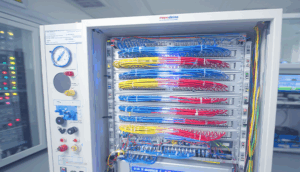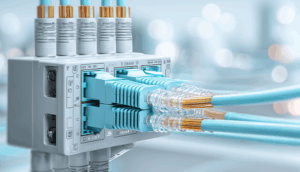In the intricate landscape of modern industry and healthcare, the seamless and reliable transmission of data is paramount. This critical function relies heavily on specialized cabling solutions designed to withstand harsh environments, minimize signal interference, and guarantee consistent performance. Industrial and medical data communication cables are not mere wires; they are the lifelines connecting critical systems, enabling real-time monitoring, precise control, and efficient data transfer that are essential for operational success and patient well-being.
Industrial environments, characterized by extreme temperatures, exposure to chemicals, and electromagnetic interference (EMI), demand robust cabling solutions. Standard consumer-grade cables simply cannot withstand these conditions, leading to signal degradation, data loss, and potential system failures. Industrial cables, on the other hand, are engineered with specialized shielding materials like braided copper or aluminum foil to minimize EMI and RFI (Radio Frequency Interference). They also employ durable jacketing materials, such as polyurethane (PUR) or Teflon (FEP), offering resistance to abrasion, chemicals, and extreme temperatures. These cables are often subjected to rigorous testing to ensure compliance with industry standards like UL, CSA, and IEC, guaranteeing their suitability for demanding applications like factory automation, robotics, and process control.

The medical field presents its own unique set of challenges for data communication. Patient safety and data integrity are of utmost importance. Medical cables must not only provide reliable data transmission but also adhere to stringent hygiene and biocompatibility requirements. They often incorporate features like antimicrobial coatings to prevent the spread of infection and low-smoke, zero-halogen (LSZH) materials to minimize toxic emissions in the event of a fire. Furthermore, medical cables are frequently designed for flexibility and durability to withstand repeated flexing and sterilization cycles. Examples include cables used in patient monitoring systems, diagnostic imaging equipment (MRI, CT scanners), and surgical robotics.

A key aspect of selecting the appropriate industrial or medical data communication cable involves considering the specific application requirements. Data transfer speed (bandwidth), cable length, and the type of data being transmitted are all crucial factors. For high-speed data applications like Ethernet communication in factory automation, Cat5e, Cat6, or even fiber optic cables may be necessary. In contrast, simpler serial communication interfaces like RS-232 or RS-485 may suffice for less demanding applications. The choice of connector is also critical, as it must provide a secure and reliable connection while withstanding the environmental conditions of the application. Common connector types include RJ45, D-sub connectors, and circular connectors with IP-rated environmental protection.
In conclusion, industrial and medical data communication cables play an indispensable role in enabling the functionality and reliability of critical systems across various industries. Their robust construction, specialized features, and adherence to stringent industry standards ensure consistent data transmission, minimizing downtime, and safeguarding patient safety. Understanding the specific application requirements and selecting the appropriate cable type are essential for optimizing performance and ensuring the long-term reliability of these vital connections. As technology advances and demands for faster data transfer rates and more resilient infrastructure continue to grow, the importance of high-quality industrial and medical cables will only increase.